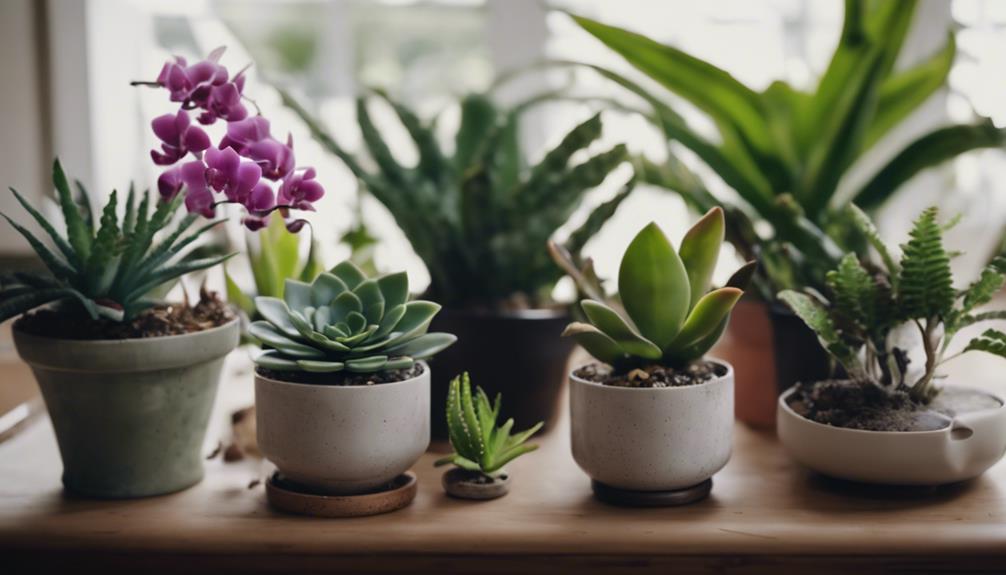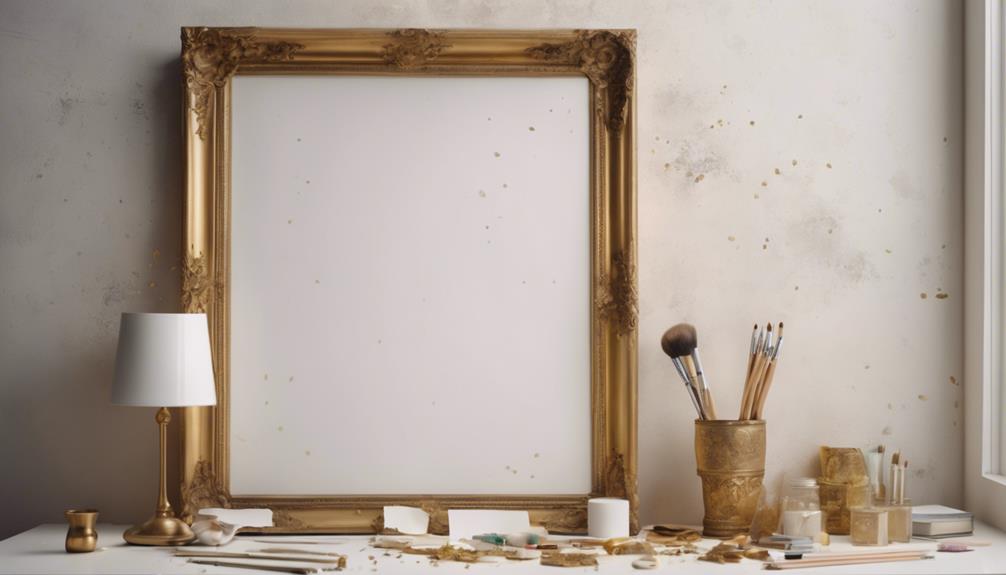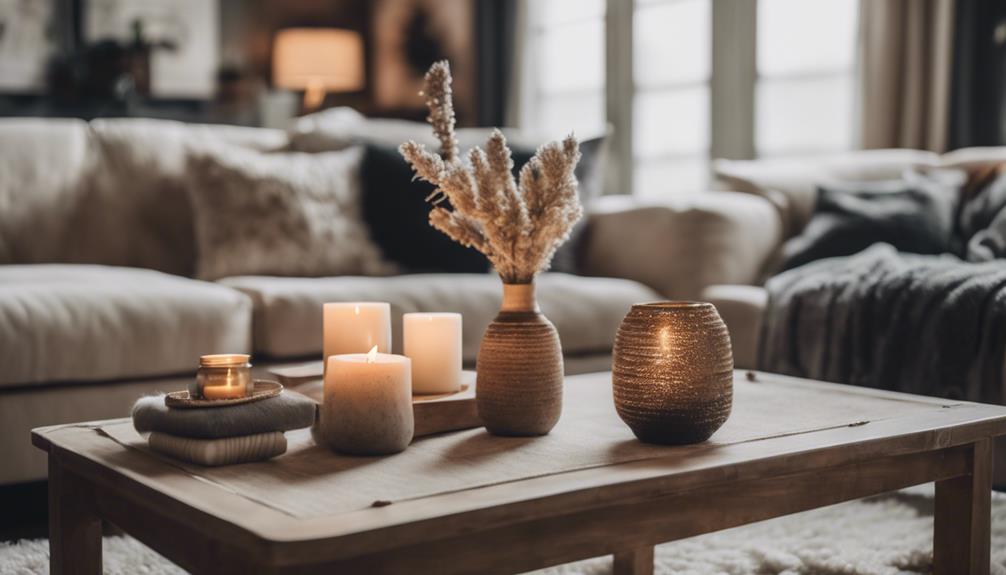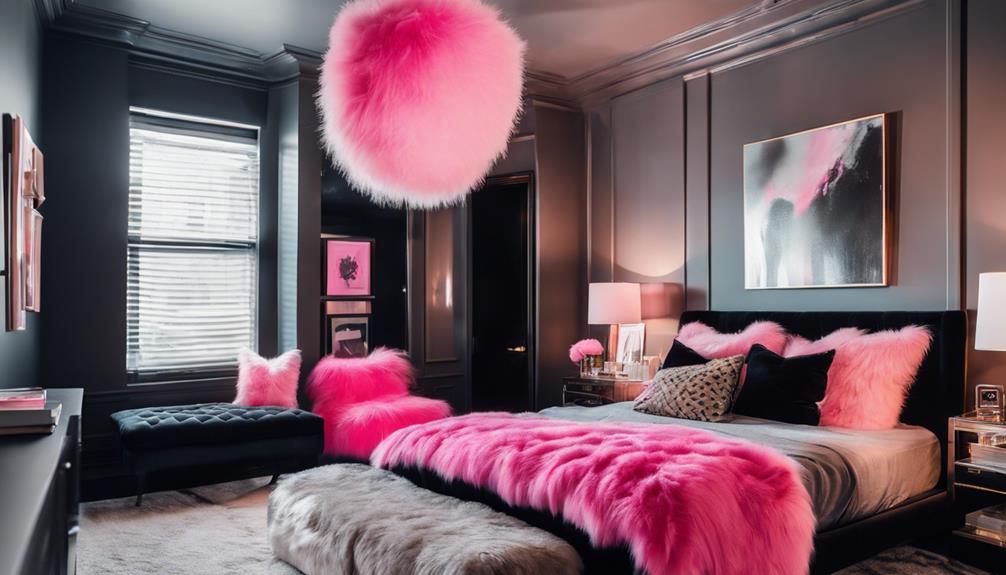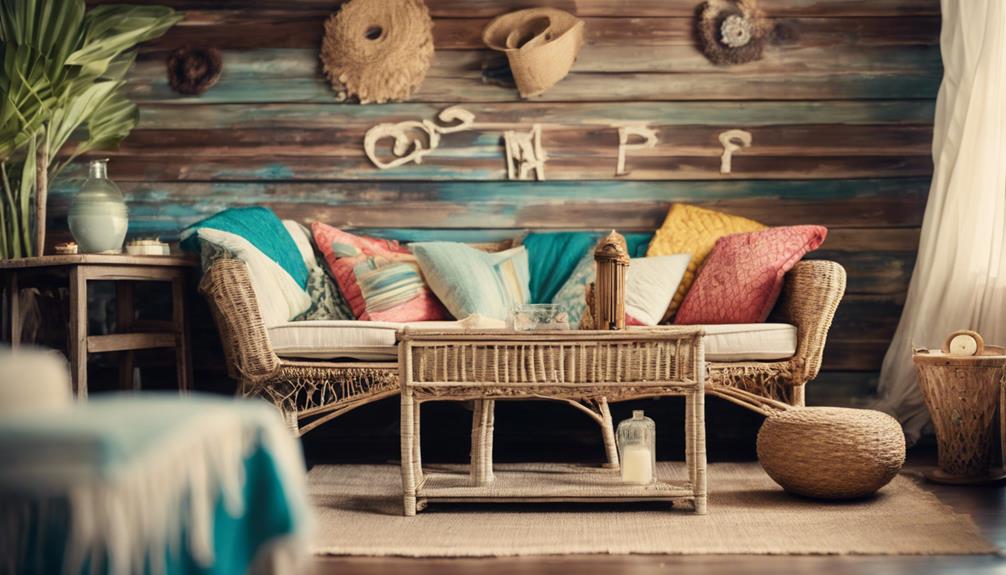When interior decorating, consider air-purifying plants like Snake Plants, Spider Plants, and Peace Lilies recommended by NASA. For aesthetics, Fiddle-Leaf Fig Trees, Monstera Deliciosa, and Succulents add visual appeal. Common choices like Palms and Rubber Plants balance aesthetics and air purification. Opt for plants with attractive leaves such as Fiddle-Leaf Figs and Split-Leaf Philodendrons for added charm. Flowering plants like orchids bring color, while non-flowering options like ZZ plants require less maintenance. Combine Cacti and Succulents for artistic displays needing minimal care. Enhance your space with plants of varying textures and sizes, creating a unique indoor oasis.
Key Takeaways
- Consider Air-Purifying Plants: Snake Plants, Spider Plants, and Peace Lilies are ideal for clean indoor air.
- Opt for Aesthetic Plants: Fiddle-Leaf Fig Trees, Monstera Deliciosa, and Succulents enhance visual appeal.
- Choose Common Indoor Plants: Palms, Pothos, and Monstera are popular for aesthetics and air-purification.
- Explore Attractive Leaves: Fiddle-Leaf Figs, Split-Leaf Philodendrons, and Rubber Plants for visual appeal.
- Balance Flowering and Non-Flowering: Mix orchids for color and snake plants for low-maintenance options.
Air-Purifying Indoor Plants
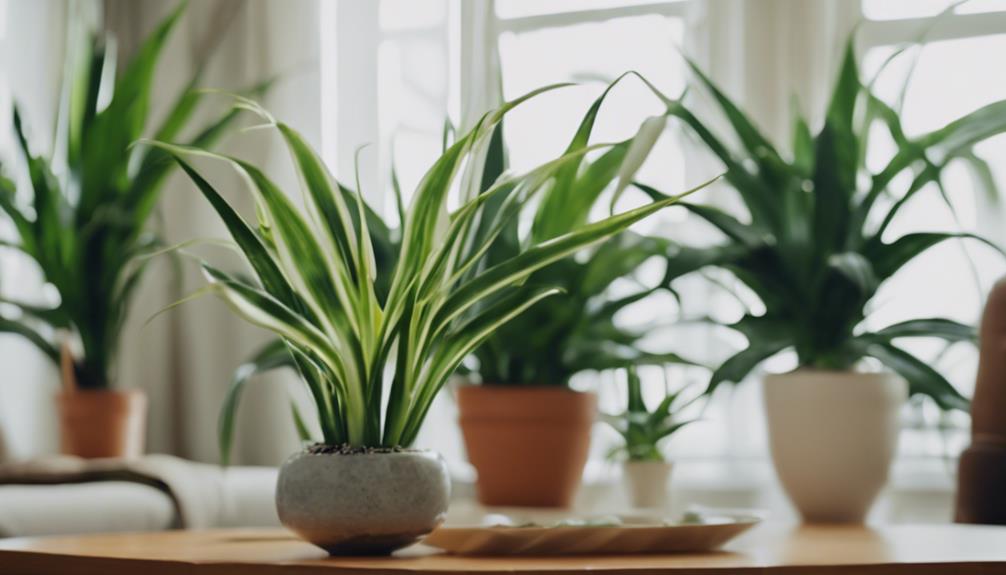
When outfitting indoor spaces with plants, we prioritize air-purifying indoor plants for their proven ability to cleanse indoor air of toxins. Snake Plants, Spider Plants, and Peace Lilies are top choices for improving indoor air quality.
According to NASA's Clean Air Study, these plants have been identified as effective in reducing harmful pollutants like formaldehyde and benzene. Spider Plants are particularly beneficial for bedrooms or living rooms as they absorb carbon monoxide and formaldehyde.
On the other hand, Peace Lilies excel at removing mold spores from the air, making them a great option for individuals with allergies or respiratory issues.
By incorporating these air-purifying indoor plants into interior spaces, not only do we enhance the aesthetic appeal of the room, but we also improve the overall health and well-being of those inhabiting the space.
Consider adding these plants to your indoor decor to enjoy cleaner and fresher air.
Aesthetic Indoor Plant Options
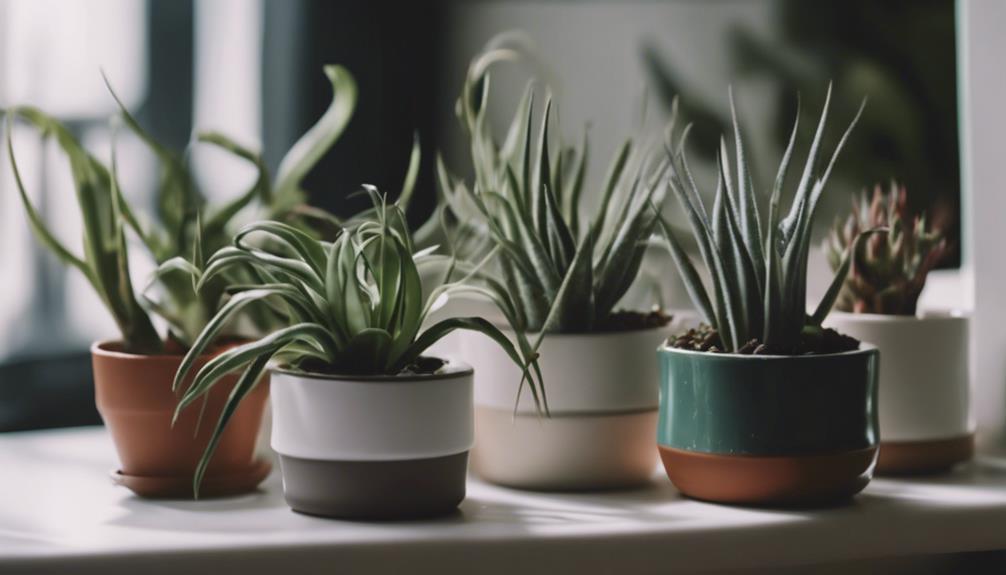
When it comes to decorating with plants, there are several popular options that can elevate the aesthetic appeal of your indoor space effortlessly.
From low-maintenance choices to those that make a bold statement, selecting the right plants can enhance your decor in various ways.
Let's explore the best plant options that not only beautify your home but also require minimal effort to maintain.
Popular Indoor Plant Choices
Among the many choices for indoor plants that enhance the aesthetics of a space, Fiddle-Leaf Fig Trees stand out for their broad leaves and elegant appearance. Monstera Deliciosa, with its striking split leaves, adds a touch of artistry to modern interiors.
Meyer Lemon Trees not only bring beauty but also functionality with fragrant citrus flowers and sweet lemons. Kentia Palms, known for their tall fronds, thrive in medium to bright light settings, making them versatile options for different spaces.
Each of these plants offers unique visual appeal, contributing to a more appealing and inviting indoor environment. Consider the characteristics of each plant and how they complement your decor style when choosing the perfect indoor plants to elevate the aesthetics of your space.
Low-Maintenance Plant Options
Moving on to low-maintenance plant options that also serve as aesthetic indoor plant choices, Snake Plants and Pothos are excellent selections for interior decorating due to their easy care requirements. These plants are known for their resilience and ability to thrive with minimal attention, making them perfect for those with busy schedules or beginners in plant care.
Snake Plants, also called Mother-in-Law's Tongue, feature striking upright leaves and are tolerant of low light conditions. Pothos, with their cascading vines and heart-shaped leaves, add a touch of greenery to any space and can adapt to various light levels.
Succulents are another low-maintenance option, known for their water-retaining properties and unique shapes, making them versatile additions to indoor decor.
Best Plants for Decor
Incorporating aesthetically pleasing indoor plants can instantly elevate the ambiance of any living space.
When considering the best plants for decor, options like Fiddle-Leaf Fig Trees are popular for their broad leaves and elegant appearance, especially suited for well-lit areas.
Split-Leaf Philodendrons, with their unique air roots and striking leaves reminiscent of artist Henri Matisse's work, add a creative touch to any room.
Meyer Lemon Trees not only serve as decorative elements but also produce sweet lemons and fragrant flowers, thriving in sunny indoor locations.
For a tropical vibe, Kentia Palms with their broad fronds bring a sense of the exotic indoors, requiring moderate to bright light for best growth.
These plant options can enhance the visual appeal of your living space effectively.
Common Indoor Plant Choices
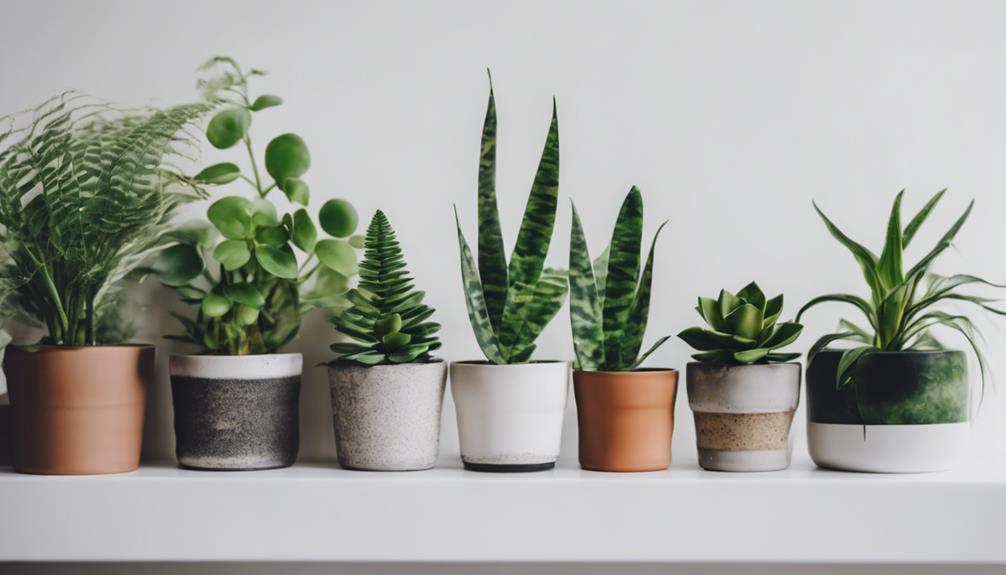
When choosing indoor plants for your home, it's crucial to explore popular options such as palms, pothos, snake plants, rubber plants, and Monstera.
Palms are favored for their tropical appearance and air-purifying qualities, while pothos thrive in various lighting conditions with their cascading vines.
Snake plants are known for being low-maintenance and beneficial for enhancing indoor air quality.
Popular Indoor Plants
Snake Plants, Fiddle Leaf Figs, Pothos, Rubber Plants, and Monstera are among the most popular indoor plant choices for their unique characteristics and ease of care. Each plant offers distinct features that can enhance the aesthetics of indoor spaces while requiring minimal maintenance.
Here is a comparison table highlighting some key attributes of these popular indoor plants:
| Plant | Unique Characteristics |
|---|---|
| Snake Plants | Air-purifying, low maintenance |
| Fiddle Leaf Figs | Large, glossy leaves, adding elegance to modern interiors |
| Pothos | Versatile, easy to care for, ideal for beginners |
| Rubber Plants | Striking dark green leaves, adaptable to various light conditions |
| Monstera | Unique split leaves, tropical aesthetic, adaptable to indoor environments |
Best Plants for Decor
Enhancing interior decor with common indoor plant choices like palms, pothos, snake plants, and rubber plants is a simple yet effective way to bring color, texture, and a natural vibe to indoor spaces. These plants aren't only aesthetically pleasing but also offer air-purifying benefits and require minimal upkeep.
Palms introduce a tropical feel, pothos are versatile and undemanding, snake plants are sturdy and resilient, while rubber plants make a bold statement with their glossy leaves. By incorporating these types of plants into your decor, you can create a visually appealing environment that enhances the overall ambiance of your home or office.
Consider the characteristics of each plant to find the best fit for your space and enjoy the benefits they bring to your decor.
Attractive Leaves for Indoor Plants
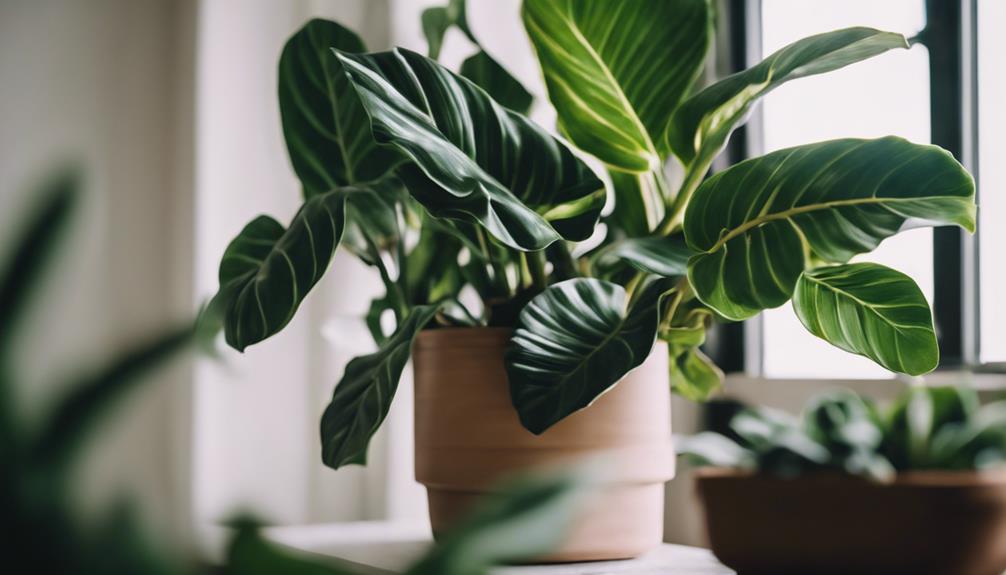
Looking at indoor plants with striking leaves, we find a range of options to elevate the aesthetic appeal of interior spaces.
When it comes to choosing the best indoor plants for their attractive leaves, there are several standout options. Plants like Fiddle-Leaf Figs and Split-Leaf Philodendrons are known for their visually striking leaves that can serve as focal points in a room.
The variegated leaves of Rubber Plants and Monstera not only add texture but also create visual interest with their unique patterns.
Pothos plants, with their heart-shaped lush green leaves, are ideal for interior decoration due to their vibrant color and easy maintenance.
Flowering and Non-Flowering Plants
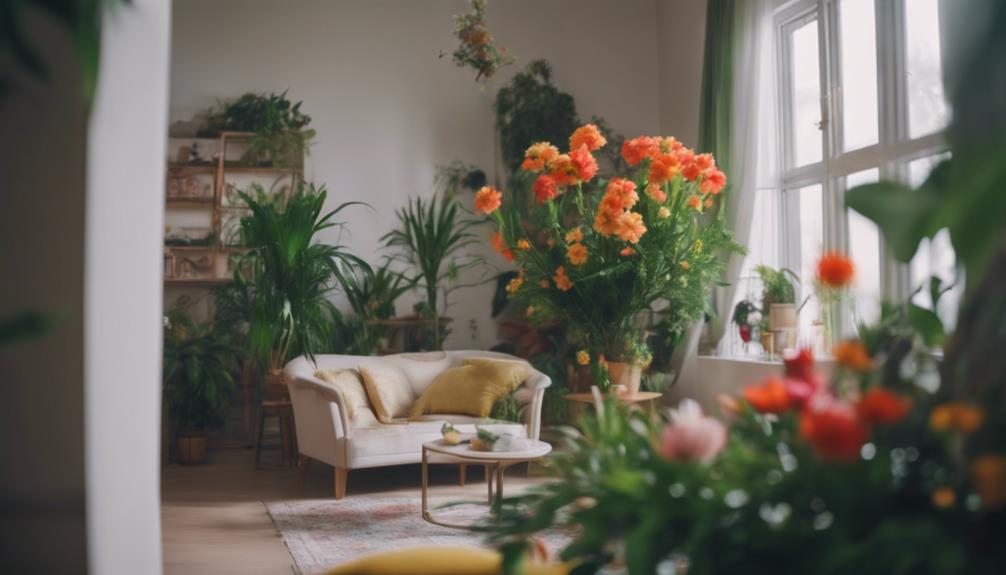
When selecting indoor plants, one consideration to make is whether to choose flowering or non-flowering varieties based on personal preferences and maintenance capabilities. Flowering plants like orchids, peace lilies, and African violets can add a pop of color and beauty to indoor spaces, creating a vibrant atmosphere. On the other hand, non-flowering plants such as snake plants, ZZ plants, and spider plants are excellent choices for air purification and are low-maintenance, making them perfect for beginners or those with busy schedules. Flowering plants do require more care and attention due to their blooming cycles, while non-flowering plants are resilient and can thrive in various indoor conditions. The decision between flowering and non-flowering plants ultimately depends on your preferences, care abilities, and the ambiance you wish to create in your space.
| Flowering Plants | Non-Flowering Plants |
|---|---|
| Orchids | Snake Plants |
| Peace Lilies | ZZ Plants |
| African Violets | Spider Plants |
Mixing Cacti and Succulents
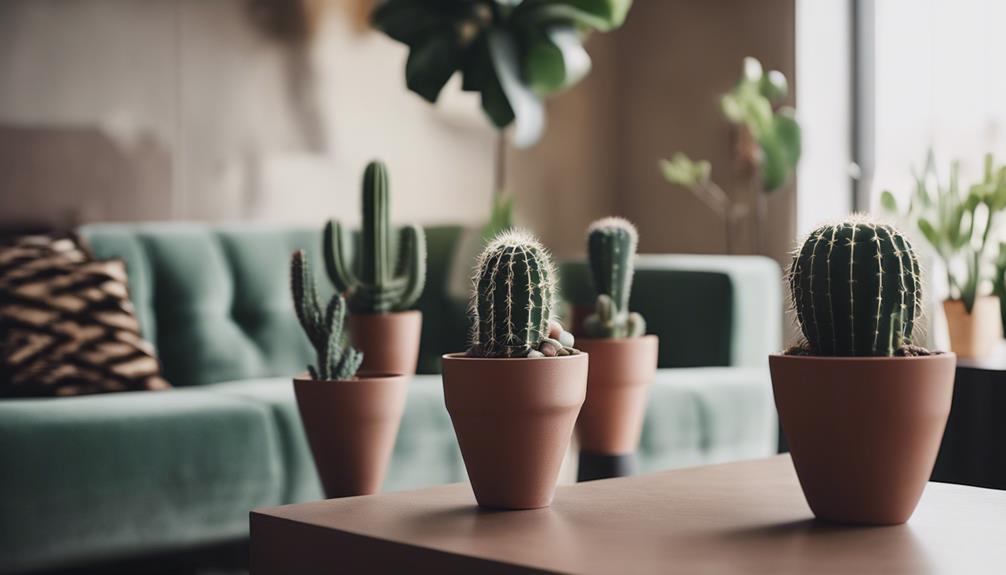
We find that combining cacti and succulents in interior decorating creates visually appealing and diverse displays that enhance the overall aesthetic of a living space. Cacti and succulents are popular choices for interior design due to their low-maintenance nature, making them ideal for those with busy schedules or limited plant care experience. These plants require infrequent watering and can thrive in various conditions, making them versatile additions to any indoor environment.
With a wide range of shapes, sizes, and colors available, cacti and succulents offer endless possibilities for creative arrangements in interior design. Mixing these plants can result in visually striking displays that add texture and interest to home decor. Their unique forms and textures complement each other well, providing a modern and stylish look to any indoor space. Whether clustered together in a group or displayed individually, cacti and succulents can bring a touch of nature into your home with minimal upkeep required.
Artistic Flair With Indoor Plants
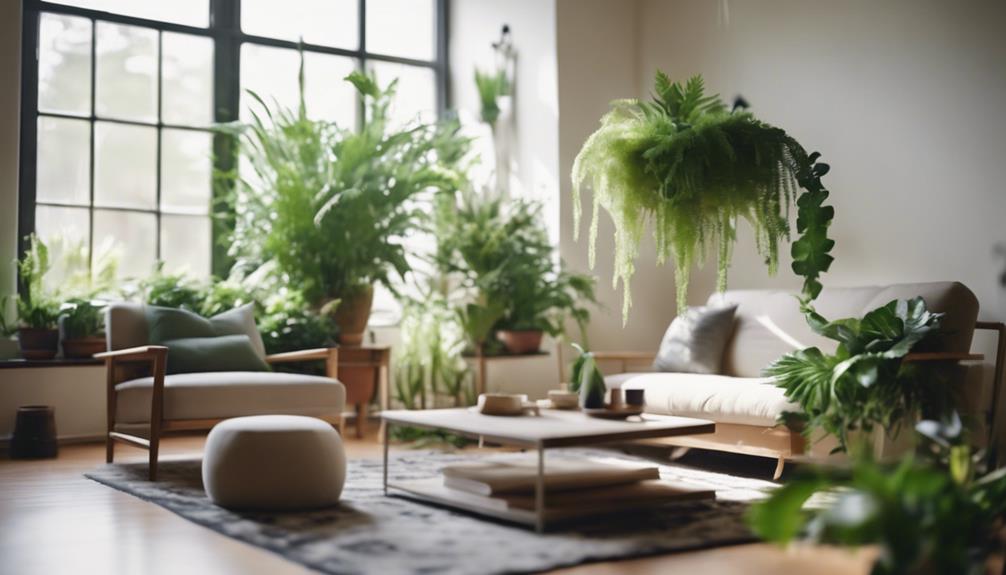
Indoor plants infuse a space with an artistic essence through their alluring shapes and foliage. In modern interior design, adding plants can greatly enhance the overall aesthetic appeal of a room.
By incorporating different types of indoor plants like flowering plants, non-flowering plants, cacti, and succulents, you can create a diverse and artistic green corner that enhances the visual interest of your decor. Selecting plants with unique textures and colors further contributes to the artistic vibe, adding depth and richness to the room.
Mixing and matching various indoor plants allows you to create a visually appealing and eclectic style that showcases your personality and creativity. Experimenting with different plant arrangements and placements can help you achieve a harmonious balance and bring a touch of nature indoors.
Visual Interest in Indoor Decor
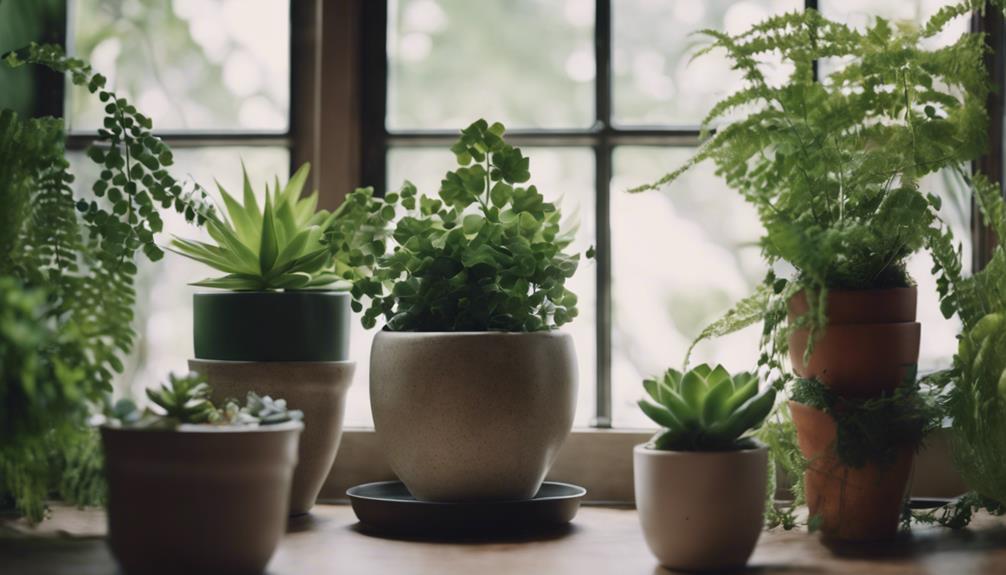
To elevate the visual appeal of indoor spaces, incorporating a variety of plant materials like succulents, cacti, and tropical plants is vital. Best Indoor Plants with different leaf shapes, textures, and colors can enhance the aesthetic appeal of interior spaces.
Adding plants with unique patterns, variegation, and foliage sizes creates depth and dimension in plant decoration. Mixing these plants together not only brings a dynamic and engaging visual display to home decor but also guarantees a visually stimulating and harmonious indoor environment.
When selecting plants, consider how these plants look together to create a cohesive and visually appealing arrangement. By carefully choosing and arranging plant materials, one can achieve a visually interesting indoor decor that brings life and vibrancy to any room.
Frequently Asked Questions
Are Plants Good for Interior Design?
Plants are indeed good for interior design. They bring a touch of nature indoors, purify the air, and promote relaxation.
Additionally, they create a calming atmosphere and contribute to an aesthetically pleasing environment. By strategically placing different plant species like succulents, cacti, or tropical plants, one can enhance the visual appeal of a room.
What Are the Best Plants for Indoor Spaces?
When it comes to selecting plants for indoor spaces, several options stand out.
Snake plants are low-maintenance air purifiers.
Fiddle leaf figs make a bold statement with their vibrant leaves.
Pothos plants thrive in low-light conditions.
Rubber plants add greenery and air purification.
Monstera plants bring a modern tropical touch with their unique split leaves.
What Decor Style Uses a Lot of Plants?
When considering decor styles that incorporate plenty of plants, two prominent options stand out.
Mid-Century Modern design embraces the simplicity and natural essence of plants like Swiss cheese plants and Fiddle-Leaf Figs.
On the other hand, Industrial decor thrives on the vibrance of Snake Plants and Cast Iron Plants, which complement its tough materials.
These plants not only enhance the aesthetics but also contribute to a welcoming and balanced environment.
How Do You Decorate Indoors With Plants?
When decorating indoors with plants, start by selecting low-maintenance options like succulents, cacti, and tropical plants. Create visual interest by grouping plants together in collections, utilizing terrariums, and mixing different types of planters. Consider using small pots for succulents and ceramic pots for tall plants to complement your indoor decor.
Incorporate stand-alone plants and plant shelfies for unique decoration options. Experiment with various plant displays to find what works best for your space.
Conclusion
To sum up, when it comes to interior decorating, the type of plant material you choose can greatly impact the overall look and feel of your space.
Just like a skilled artist carefully selects their paint colors, selecting the right indoor plants can add depth, texture, and life to your home.
With a variety of options available, from air-purifying plants to flowering varieties, there's a plant out there to suit every style and taste.
Choose wisely, and watch your space bloom with beauty.
